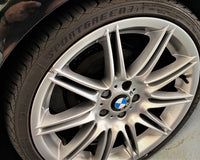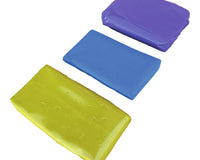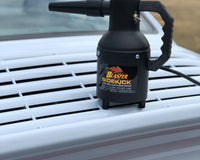Over the last decade, ceramic coatings have revolutionised automotive paint protection, providing superior hydrophobicity, UV resistance, and long-lasting shine. However, as detailing technology continues to evolve, a new contender has entered the scene: graphene coatings. By 2025, car enthusiasts and professionals alike are asking the same question – is graphene really better than ceramic, or is it just marketing hype?
To answer this, it’s important to look beyond the buzzwords and compare these two technologies based on real-world performance, scientific properties, and value for money. Both coatings serve the primary purpose of protecting a vehicle’s exterior, but their formulation, application, longevity, and benefits differ. For car owners who want to make the most informed decision for their vehicle in 2025, a deeper understanding of these options is essential.
While ceramic coatings have become a staple in the detailing world, graphene coatings are emerging with the promise of addressing the weaknesses of ceramics. Whether you're a DIY detailer or rely on professional services, knowing which product aligns with your needs and vehicle usage is critical in choosing the right protection for your car's finish.
What Are Ceramic Coatings?
Ceramic coatings, also known as nano-coatings, are liquid polymers based on silicon dioxide (SiO₂). When applied to a vehicle’s surface, they chemically bond with the clear coat to form a hardened protective layer. This layer is resistant to UV rays, chemicals, bird droppings, and other environmental contaminants, significantly reducing oxidation and keeping the paintwork glossier for longer.
In 2025, ceramic coatings are available in various grades – from entry-level consumer versions to professional-only formulas that last up to 5 years or more. Their hydrophobic nature causes water to bead and roll off the surface, making cleaning easier and reducing water spotting. However, ceramic coatings can be prone to micro-marring, and water spots can still etch into the layer if left unattended.
Most ceramic coatings require proper surface preparation, controlled application conditions, and a curing period of 24–48 hours. Their durability, shine enhancement, and self-cleaning properties make them ideal for car owners who seek a semi-permanent solution to paint protection.
What Are Graphene Coatings?
Graphene coatings are the latest innovation in surface protection, developed as an evolution of ceramic coatings. They incorporate reduced graphene oxide (rGO) into a ceramic base, combining the proven benefits of SiO₂ coatings with the additional conductivity, strength, and anti-static properties of graphene. This hybrid structure is what sets graphene coatings apart in 2025.
Graphene is an atom-thin layer of carbon arranged in a hexagonal lattice, known for being incredibly strong, lightweight, and thermally conductive. When infused into a coating, it improves water-spot resistance, chemical resistance, and heat dispersion, resulting in a finish that remains cleaner for longer.
Unlike ceramic coatings, graphene coatings are less prone to streaking during application and offer enhanced slickness. They also cure faster and can perform better in areas with hard water, where ceramic coatings may suffer from spotting or staining. These benefits make them increasingly popular among detailers and everyday drivers who seek easier maintenance without compromising protection.
Durability and Longevity
Both ceramic and graphene coatings offer long-term durability, but recent tests in 2025 suggest that graphene coatings may have a slight edge in longevity. Traditional high-quality ceramic coatings can last between 2 to 5 years, depending on environmental conditions, wash habits, and maintenance routines. Graphene coatings, particularly those using reduced graphene oxide in a professional-grade solution, can extend this to 5–7 years under similar conditions.
Graphene's superior strength and chemical resistance contribute to this enhanced durability. While ceramic coatings may degrade over time from repeated washing and exposure to acids, graphene coatings tend to maintain their structural integrity longer. This makes them a compelling choice for car owners who want a set-it-and-forget-it solution.

However, it’s worth noting that longevity also depends heavily on how well the coating is applied. A poorly installed graphene coating may underperform compared to a properly applied ceramic one. Hence, whether DIY or professional, preparation and technique remain paramount.
Hydrophobic Properties and Water Spot Resistance
One of the most advertised benefits of both coatings is their hydrophobic nature. Water repellency keeps your car cleaner for longer, as dirt and grime are less likely to bond with the surface. Ceramic coatings are known for their excellent beading effect, where water forms tight beads and rolls off easily.
Graphene coatings offer similar, if not improved, hydrophobicity. More importantly, they are less prone to water spotting. One of the drawbacks of ceramic coatings is their tendency to attract mineral-laden water droplets, which, if left to dry, can etch into the coating layer. Graphene's anti-static nature reduces dust and mineral adhesion, and its thermal conductivity helps dissipate heat, meaning water dries more evenly and slowly, reducing the risk of etching.
For car owners who frequently wash their vehicles outdoors or live in areas with hard water, graphene coatings can provide a distinct advantage in keeping the surface clean and clear of water marks.
Scratch Resistance and Surface Hardness
Scratch resistance is another area where both coatings offer notable benefits, but with some caveats. Ceramic coatings, when fully cured, form a hard layer that can resist light abrasions and swirl marks from washing. However, they don’t make your car scratch-proof. The hardness rating of ceramic coatings typically lies around 9H on the pencil scale.
Graphene coatings also rate highly on hardness, but they offer greater flexibility, which makes them less brittle under pressure. This can help resist marring better during washing or from contact with soft abrasives. In practice, however, both types of coatings serve more as sacrificial layers that reduce the frequency and severity of scratches, rather than eliminating them entirely.
For maximum scratch prevention, proper washing techniques and tools—like grit guards and microfibre mitts—are still crucial, regardless of which coating is used.
Ease of Application
Ceramic coatings, especially professional-grade variants, require careful surface preparation, including paint correction, decontamination, and climate-controlled application. The process can be time-consuming and unforgiving to errors, with high spots and streaks being common issues for beginners.
Graphene coatings in 2025 have improved user-friendliness, making them more forgiving during application. Many consumer-grade options allow for smoother spreading, better levelling, and easier buffing. The increased slickness also reduces the likelihood of buffing haze or streaks, especially in humid environments.
For DIY enthusiasts looking to apply a coating at home, graphene-based products offer an easier and more error-tolerant experience. However, for long-term results and peace of mind, professional installation is still recommended for both types.
Appearance and Gloss Enhancement
Aesthetically, ceramic coatings have long been praised for their ability to enhance gloss, depth, and colour richness. They make dark colours look wetter and brighter colours pop with vibrance. The mirror-like finish is one of the biggest appeals for car owners who want their vehicle to stand out.
Graphene coatings also enhance the appearance, but with a more subtle, refined gloss. They deliver a smoother look rather than an ultra-wet gloss, which some enthusiasts prefer for a more natural appearance. The added slickness gives a tactile satisfaction and ensures dust doesn’t cling to the surface as easily, enhancing the overall look between washes.
Whether one looks better than the other is subjective and often depends on the colour of the vehicle and the desired finish. Some detailers recommend combining graphene’s practical benefits with ceramic’s gloss for a hybrid effect.
Maintenance Requirements
Maintenance is a key consideration for any coating. Ceramic coatings require gentle washing, ceramic-friendly shampoos, and periodic top-ups using maintenance sprays or SiO₂-based boosters. Neglecting maintenance can reduce their performance over time.
Graphene coatings, thanks to their anti-static nature and higher slickness, stay cleaner for longer and require less frequent maintenance. Dirt doesn’t cling as easily, and the surface rinses off more effectively with plain water. Additionally, graphene coatings are more resistant to chemical cleaners, so accidental use of harsher soaps is less likely to degrade them.
In 2025, graphene coating manufacturers are also releasing maintenance sprays tailored to rGO formulations, allowing owners to extend the life of their coatings even further.
Cost and Value
Cost remains a deciding factor. Ceramic coatings vary widely, from £30 DIY kits to £1000+ professional packages. Graphene coatings, being newer, are priced slightly higher on average but are becoming more competitive as they become mainstream.
When evaluating value, consider not only the price of the product but also longevity, ease of maintenance, and appearance. Graphene coatings offer more convenience and potentially lower long-term costs due to reduced maintenance and increased durability.
So, Which Coating is Best in 2025?
There’s no one-size-fits-all answer. For many vehicle owners, graphene coatings in 2025 represent the future of car protection, offering superior resistance to water spots, easier application, and longer-lasting results. They particularly shine for daily drivers, vehicles exposed to harsh environments, or owners who prefer minimal maintenance.
However, ceramic coatings remain a strong choice for those seeking intense gloss and who are willing to maintain their coating more actively. Their proven track record and wide availability make them ideal for detailers and enthusiasts who prioritise aesthetics.
Ultimately, the best choice depends on your vehicle, usage habits, and expectations. Whichever route you take, proper application, care, and understanding of your coating's properties will ensure your investment pays off in both protection and shine.




